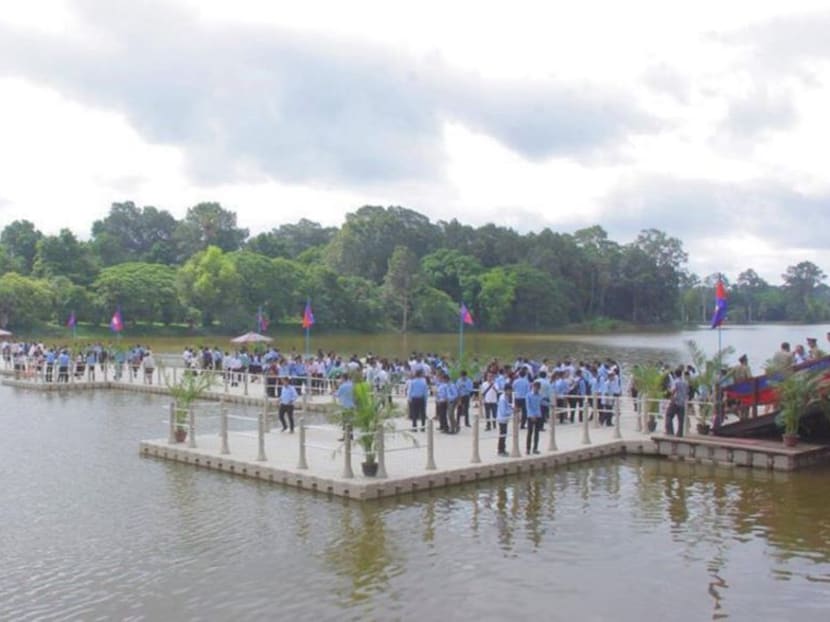Floating bridge to Angkor Wat temple opens to foreign tourists
PHNOM PENH — A floating bridge opened for use by foreign tourists and local visitors at Cambodia’s famed Angkor Wat on Thursday (May 25), enabling them to reach the ancient temple while the original stone bridge undergoes renovation by Cambodian and Japanese experts.
PHNOM PENH — A floating bridge opened for use by foreign tourists and local visitors at Cambodia’s famed Angkor Wat on Thursday (May 25), enabling them to reach the ancient temple while the original stone bridge undergoes renovation by Cambodian and Japanese experts.
The 170m-long, 8m-wide floating bridge, for which construction began last November, is built to accommodate up to 1,360 people at a time, according to officials.
The temporary bridge, built on 6,720 polyethene airbags, is located to the south of the original Spean Harl bridge, also known as the Western Causeway, which is used by millions of tourists every year.
The 200-meter overpass, with railings covered with Hindu devotional motifs, is set to undergo a second phase of repairs by experts of the Apsara Authority, which is responsible for maintaining and managing the World Heritage site, the Ministry of Fine Arts and Culture, and Tokyo-based Sophia University.
The first phase of 100 meters of causeway renovation was completed in November 2007 after 12 years of work, which was carried out mainly by Cambodians with funding from the Japanese government and assistance from Sophia University.
The work, which included the training of specialists in civil engineering, architecture, and archaeology, served “as a symbol of the rejuvenation of the spirits of the Cambodians after the civil war,” according to the university.
Under the second phase, which is expected to be finished by 2020, restoration work will be done on the remaining 100 meters using stone masonry techniques of the Angkor era, which began in the late 9th century and lasted until the late 14th century. KYODO







